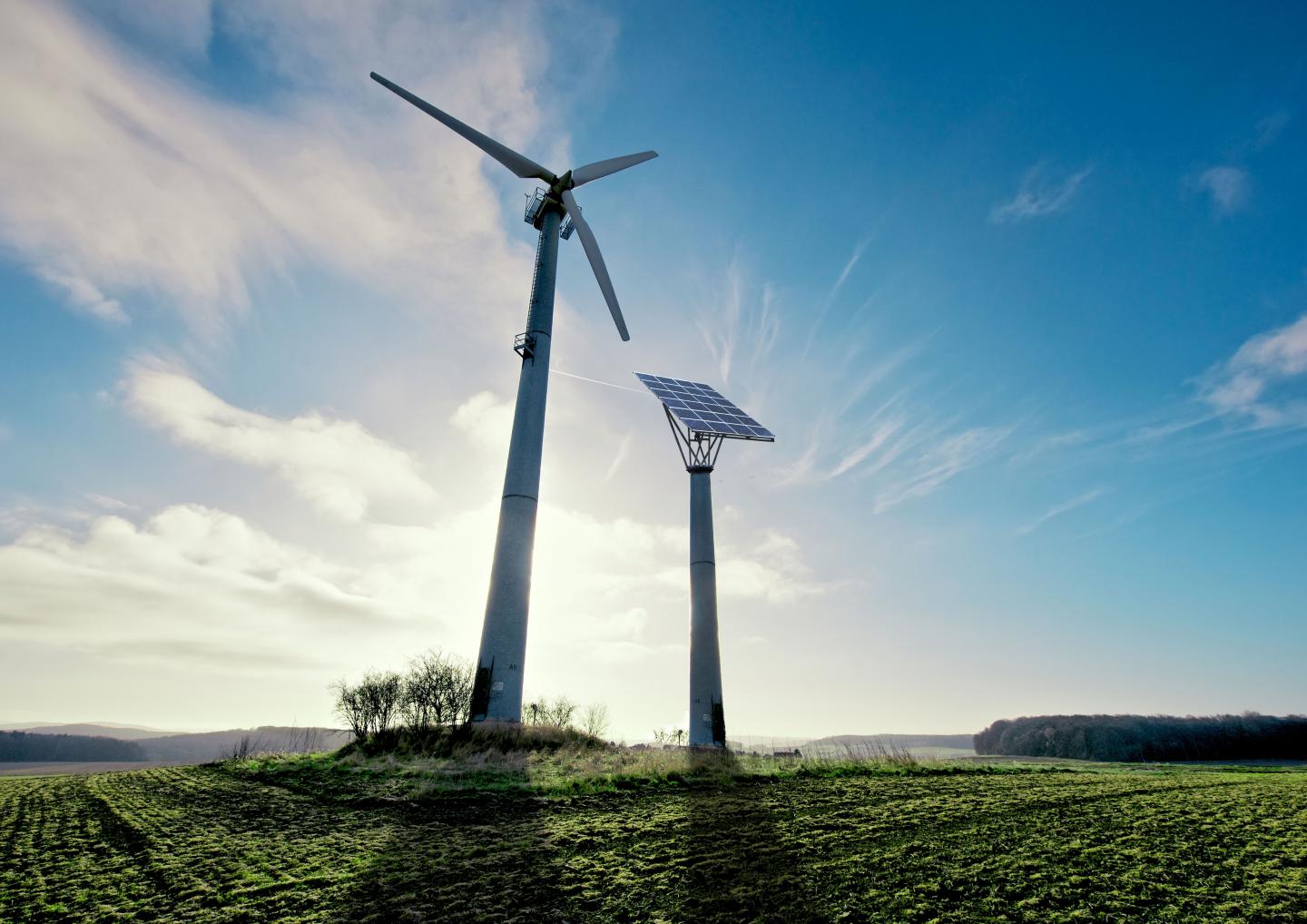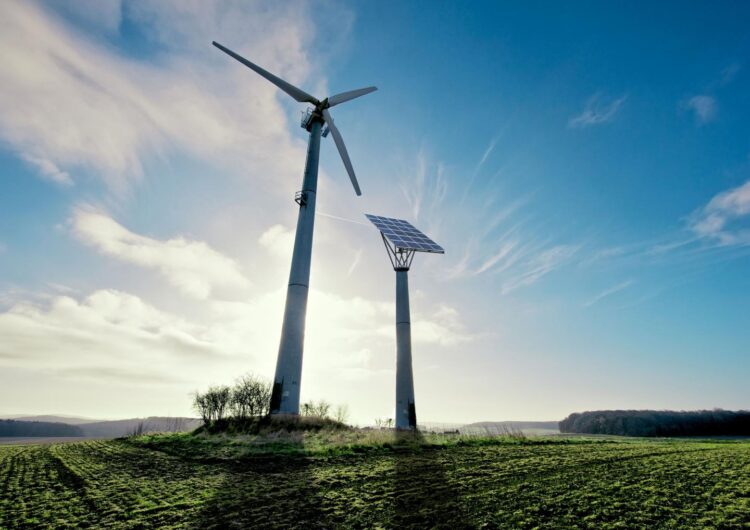Research initiative of the Helmholtz Association presents strategies, technologies, and open-source tools

Credit: Pascal Armbruster, KIT
To contribute to global climate protection, Germany has to rapidly and comprehensively minimize the use of fossil energy sources and to transform the energy system accordingly. The Helmholtz Association’s research initiative “Energy System 2050” has studied how and by which means this can be achieved. One of the partners is Karlsruhe Institute of Technology (KIT). At the final conference in Berlin, scientists of the participating research centers presented their results.
Having decided to achieve climate neutrality by 2050, Germany as an industrialized country is facing a tremendous challenge: Organizing a comprehensive and sustainable transformation of the energy system while ensuring stable energy supply for our everyday life, for industry, and for the operation of central communication and transport infrastructures. Within the framework of the research initiative “Energy System 2050” (ES2050), scientists of the Helmholtz Association have developed concrete strategies and technical approaches to both improving climate protection and enhancing supply security. These have already been picked up by politics and industry.
“Climate-friendly transformation of the energy system requires adequate technologies and clear systemic solutions. Within ‘Energy System 2050,’ we have not only succeeded in developing them. We have also tested them in real operation and elaborated flexible strategies for their use,” says Professor Holger Hanselka, coordinator of the research initiative, Research Field Coordinator Energy of the Helmholtz Association, and President of KIT. “Our research initiative pools the competencies of eight research centers to make the energy transition a success.”
Professor Otmar D. Wiestler, President of the Helmholtz Association, says: “Local, national, and international energy systems have to be switched to renewable energy sources as quickly as possible. This not only is an important step to cope with climate change and increasing degradation of the environment. With the help of regenerative energy systems, we can also produce energy at low costs without being dependent on imports. The ‘Energy System 2050’ initiative clearly shows which fundamental contributions can be made by the Helmholtz Association in line with its mission to conduct cutting-edge research for solving grand challenges facing society.”
Strategies, Technologies, and Open-source Tools for the Energy Transition
The research initiative was launched in 2015 to make a relevant and forward-looking contribution to the transformation of the energy system. 170 scientists conducted research in teams that focused on a piece of the energy transition puzzle each. Based on a systemic analysis of the German energy supply system, they developed economically efficient and climate-friendly transformation paths until 2050. This work was complemented by research into the architecture and security of the future power grid and integration of hydrogen and biogenic energy sources in the energy system. Moreover, power grid components, such as redox flow storage systems, biogas facilities, or gas turbines for the reconversion of synthesis gas and biogas were subjects of studies. Researchers tested the technologies in detail and systemically analyzed their interaction. As a result, the best “team players” for sector coupling were found, including technologies to combine heat and power supply. In addition, lifecycle-oriented sustainability analyses were made. Apart from costs and CO2 emissions, such analyses consider other ecological and social factors when producing fuel from biogenic residues, for instance.
To carry out dynamic experiments on the system level, the researchers of ES2050 established a large-scale network of research infrastructures, including the Energy Lab 2.0 on the campus of KIT and the Living Lab Energy Campus of Forschungszentrum Jülich (FZJ). These detailed models of the energy system have meanwhile been equipped with own grid infrastructures and power-to-x facilities, residential buildings, and transport system components. The physical models are closely interlinked with virtual structures for the smart extension of the energy system. With the help of “digital twins,” it is possible to integrate system components in experiments, although they do not yet exist – for instance, the future hydrogen infrastructure. The research initiative understands its modeling tools, datasets, and benchmarks as parts of an open ecosystem and makes them available as open sources. This “toolkit for the energy transition” is used by large transmission grid operators already.
Sustainable Contribution to the Energy Transition
It is still a long way to go to climate neutrality in the energy sector, but change has started: In 2019, for instance, the share of renewable energy sources in gross power consumption was 42.1 percent, in the year before 37.8 percent, according to the Federal Environment Agency. The results of the research initiative “Energy System 2050” can enhance this dynamic trend and extend it to cover the housing, transport, and industry sectors. The research initiative “Energy System 2050” was launched by the research field Energy of the Helmholtz Association. The partners are the KIT, the German Aerospace Center (DLR), Forschungszentrum Jülich (FZJ), the Helmholtz Centre Potsdam (GFZ), the Helmholtz Centre Berlin (HZB), the Helmholtz Centre Dresden-Rossendorf (HZDR), the Max Planck Institute for Plasma Physics (IPP – associated), and the Helmholtz Centre for Environmental Research (UFZ).
###
More Information:
https:/
More about the KIT Energy Center:
http://www.
Press contact:
Dr. Martin Heidelberger
Press Officer
Phone: +49 721 608-41169
Email: [email protected]
Being “The Research University in the Helmholtz Association”, KIT creates and imparts knowledge for the society and the environment. It is the objective to make significant contributions to the global challenges in the fields of energy, mobility, and information. For this, about 9,300 employees cooperate in a broad range of disciplines in natural sciences, engineering sciences, economics, and the humanities and social sciences. KIT prepares its 24,400 students for responsible tasks in society, industry, and science by offering research-based study programs. Innovation efforts at KIT build a bridge between important scientific findings and their application for the benefit of society, economic prosperity, and the preservation of our natural basis of life. KIT is one of the German universities of excellence.
Media Contact
Monika Landgraf
[email protected]
Original Source
https:/





